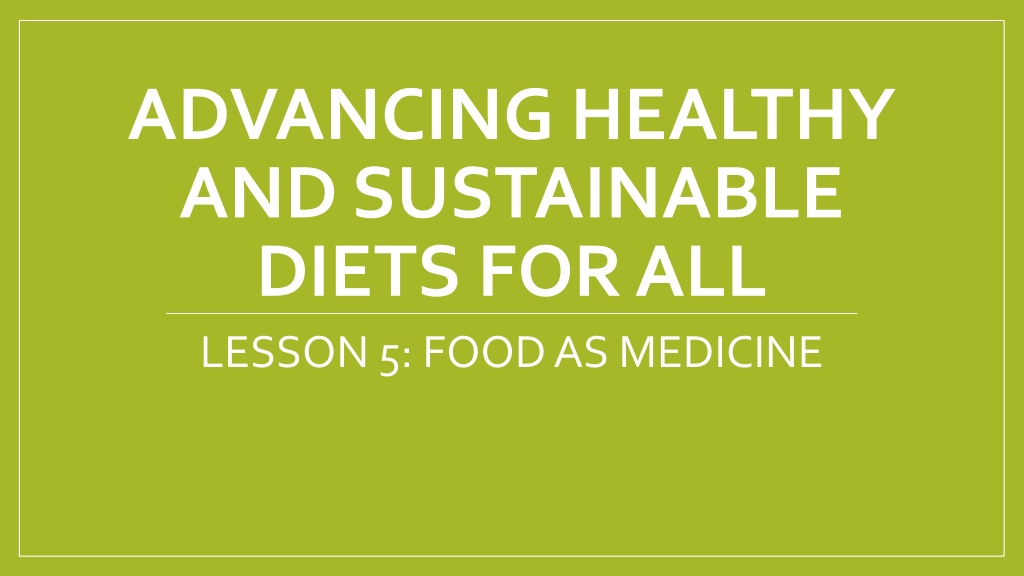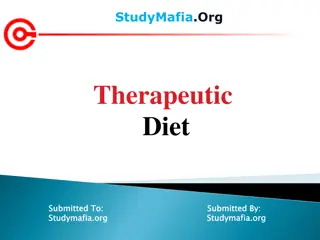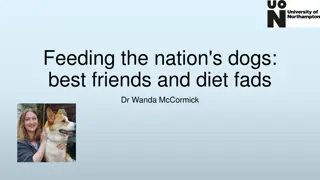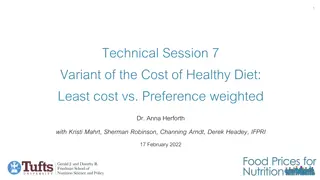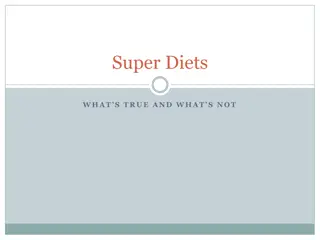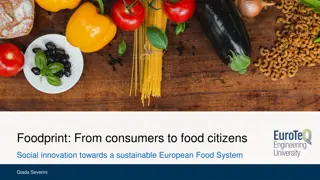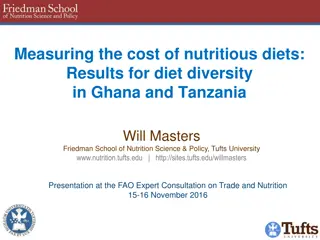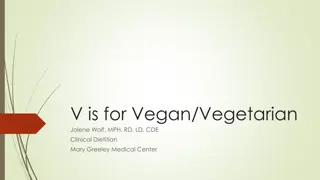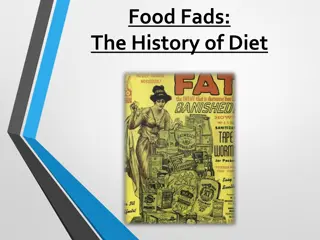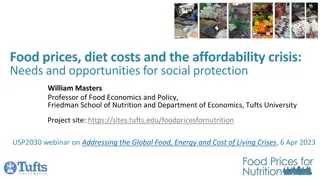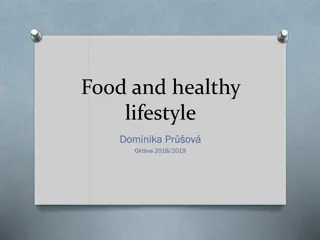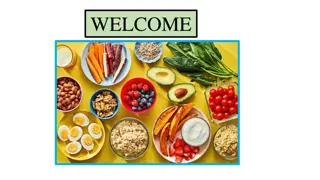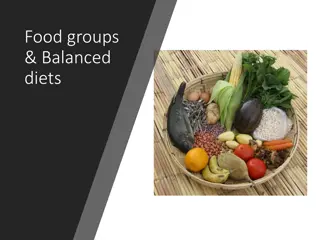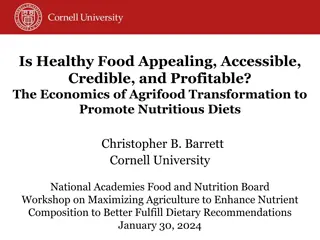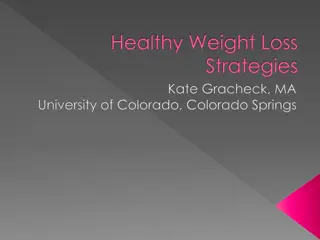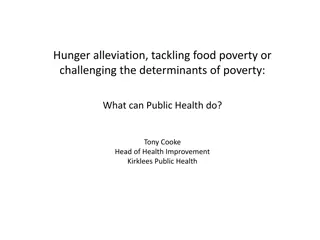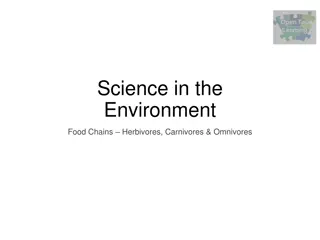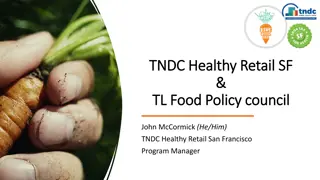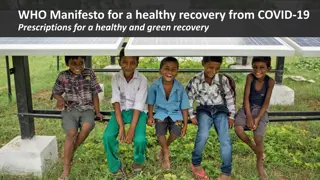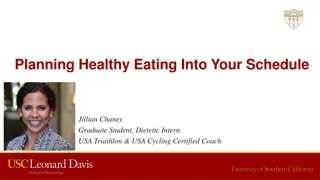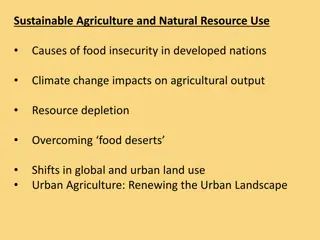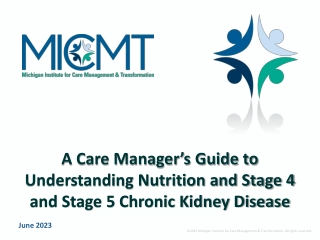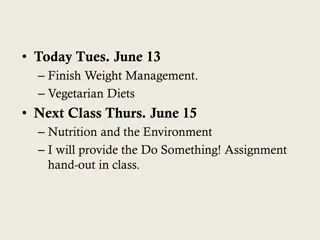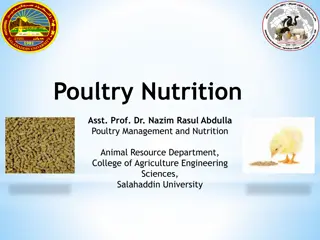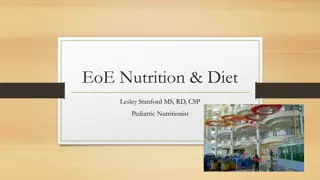Advancing Healthy and Sustainable Diets Lesson 5: Food as Medicine
This lesson focuses on promoting sustainable diets for all through the concept of food as medicine. It explores the importance of mindful eating, setting dietary goals, and overcoming barriers to achieving a healthy diet. The curriculum aims to educate individuals on sustainable food systems and behavior change to advance overall health and ecological conservation.
Uploaded on Sep 26, 2024 | 0 Views
Download Presentation

Please find below an Image/Link to download the presentation.
The content on the website is provided AS IS for your information and personal use only. It may not be sold, licensed, or shared on other websites without obtaining consent from the author. Download presentation by click this link. If you encounter any issues during the download, it is possible that the publisher has removed the file from their server.
E N D
Presentation Transcript
ADVANCING HEALTHY AND SUSTAINABLE DIETS FOR ALL LESSON 5: FOOD AS MEDICINE
REFLECTION DO YOU THINK YOU ATE BETTER OR WORSE THAN YOU NORMALLY DO OVER THE HOLIDAYS? WHAT GOALS DID YOU SET TO IMPROVE YOUR DIET OVER THE HOLIDAY SEASON? WHAT WERE SOME BARRIERS TO ACHIEVING THESE GOALS? WERE YOU MINDFUL OF YOUR CONSUMPTION? DID YOU PRACTICE MINDFUL EATING? HOW CAN YOU EAT MORE MINDFULLY IN THE FUTURE?
Advancing Healthy and Sustainable Diets for All Lesson Plan #5 Food as Medicine What are sustainable diets? Healthy diets from sustainable food systems that advance the human condition and conserve ecological resources in socially acceptable ways. 1 What is the goal of this curriculum? To introduce consumers to sustainable diets and food systems concepts and to build capacity for behavior change and system advocacy to advance healthy and sustainable diets for all.
According to the US Dietary Guidelines, Americans eat too much food on the left and not enough on the right. Foods high in micronutrients (vitamins and minerals) Foods high in macronutrients (carbohydrates, lipids, fats) This Photo by Unknown Author is licensed under CC BY-SA-NC This Photo by Unknown Author is licensed under CC BY
BY EATING A BALANCED DIET, WE CAN ACHIEVE OPTIMAL HUMAN AND ENVIRONMENTAL HEALTH This Photo by Unknown Author is licensed under CC BY-SA
Activity: Essential Micronutrients Nutrient Body Role and/or Health Benefit Food Sources Calcium Bone and teeth health. Necessary for muscles, nerves, and glands. Dairy products, leafy-green vegetables, fish (with bones), fortified products, and beans/legumes. Fruits and vegetables and whole grains. Liver, asparagus, oranges, beans/legumes, and fortified products. Nuts, seeds, leafy-green vegetables, bananas, whole grains. Fiber Reduced risk for coronary heart disease, maintains healthy bowels Reduced risk for birth defects in the brain or spinal cord. Folate Magnesium Bone health and normal body functioning. Potassium Maintenance of a healthy blood pressure. Needed for normal cellular functioning, although most people consume too much. Fruits and vegetables Sodium Highly and ultra-processed foods and beverages, sauces and gravies.
Nutrient Body Role/Health Benefit Food Sources Vitamin C Wound healing and healthy gums and teeth. Citrus fruits, bell peppers, leafy-green vegetables. Liver, egg yolks, fish, and dark orange fruits and vegetables Fish, dairy, eggs. Vitamin A Eye, skin, and immune system health Vitamin D Heart, bone, immune system, and nervous system health Immune system, vision, skin, and bone health Beta-carotene Pumpkin, Sweet Potato, Carrots, Winter Squash, Cantaloupe, Apricots, Spinach, Collard Greens, Kale, Broccoli. Tomatoes and Tomato Products, Pink Grapefruit, Red Peppers, Watermelon. Lycopene Reduced risk for prostate cancer and heart health Lutein Eye and heart health and reduced risk for some cancers. Collard Greens, Kale, Spinach, Broccoli, Brussels Sprouts, Lettuces, Artichokes. Resveratrol Heart and lung health and reduced risk for some cancers. Reduced inflammation. Peanuts and grapes. Anthocyanidins Blood vessel health and reduced risk for some cancers. Blueberries, Blackberries, Plums, Cranberries, Raspberries, Red Onions, Red Potatoes, Red Radishes, Strawberries. Soybeans, tofu. Isoflavones Bone and joint health, lower cholesterol, and reduced risk for breast cancer and inflammation.
Activity: Nutrient Density Scientists have identified which fruits and vegetables have the highest nutrient density. Can you guess what they are??
Activity: Nutrient Density Scientists have identified which fruits and vegetables have the highest nutrient density. Can you guess what they are??
CLOSING REFLECTION AND GOAL SETTING
